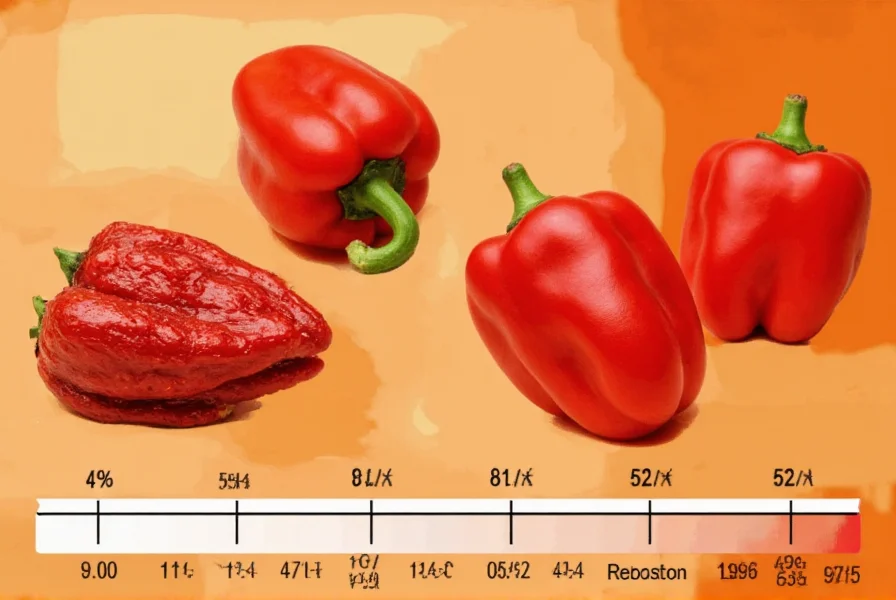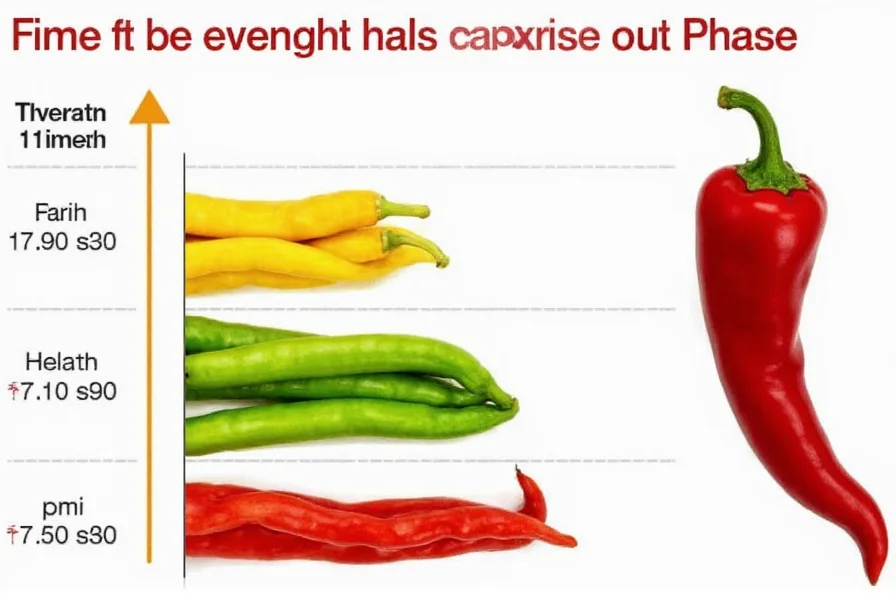Table of Contents
- Introduction: Bell Peppers Have 0 SHU — Not Spicy at All
- Bell Peppers 101: What You Need to Know
- Decoding the Bell Pepper Heat Scale
- Why Are Bell Peppers Heat-Free?
- Factors That Influence Perceived Heat (Not Actual Spice)
- Cooking with Bell Peppers: Tips and Tricks
- Buying Guide: Choosing the Best Bell Peppers
- Conclusion: Embrace the Sweetness, No Spice Needed
Introduction: Bell Peppers Have 0 SHU — Not Spicy at All
Contrary to popular belief, bell peppers have 0 Scoville Heat Units (SHU) — they are completely non-spicy. This guide explains why bell peppers don't register on the heat scale and how they differ from hot peppers. According to the USDA and food science experts, bell peppers lack capsaicin, the compound responsible for spiciness in chili peppers.
Bell Peppers 101: What You Need to Know
Bell peppers are part of the Capsicum annuum family, which also includes jalapeños, habaneros, and ghost peppers — you know, the spicy stuff! But unlike their fiery cousins, bell peppers have been bred for sweetness and thickness. They lack the compound that gives chilies their kick: capsaicin.
- Color Variations: Green (unripe), Yellow, Orange, Red (fully ripe)
- Texture: Thick, crunchy walls
- Flavor Profile: Sweet, earthy, sometimes grassy
Decoding the Bell Pepper Heat Scale
| Pepper Type | Scoville Heat Units (SHU) |
|---|---|
| Bell Pepper | 0 SHU |
| Jalapeño | 2,500–8,000 SHU |
| Habanero | 100,000–350,000 SHU |
| Ghost Pepper | Over 1,000,000 SHU |
Still wondering why they're called "peppers" if they're not spicy? Well, the term "pepper" comes from the plant genus, not the spice level. So, no need to reach for the milk after biting into a red bell pepper!

Why Are Bell Peppers Heat-Free?
Let's get technical for a second. The reason bell peppers score a big fat zero on the bell pepper heat scale is because they lack capsaicinoids — specifically capsaicin — the chemical responsible for the burning sensation we associate with spicy foods.
According to the USDA and food science experts, bell peppers (Capsicum annuum) have been selectively bred to lack capsaicin, while other peppers in the same family have it. Here's how it works:
- Capsaicin binds to pain receptors in your mouth and skin
- It tricks your brain into thinking it's being burned
- Your body responds by releasing endorphins — hence the "chili high"
But bell peppers? They skipped all that fun. Instead, they focus on delivering antioxidants like vitamin C and beta-carotene. In fact, red bell peppers contain more vitamin C than an orange — and without the tangy bite!
Factors That Influence Perceived Heat (Not Actual Spice)
Although bell peppers are 0 SHU and contain no capsaicin, some people may experience mild irritation when eating them raw. This is due to texture or volatile compounds, not actual heat. It's important to note that this is not the same as the spicy sensation caused by capsaicin in hot peppers.
- Pungent Volatiles: Bell peppers release aromatic compounds when cut or chewed. These can irritate sensitive nasal passages or throats, but this is not capsaicin-induced heat.
- Fiber Texture: The thick, crisp flesh can feel slightly harsh, especially if undercooked or raw, but this is texture-related, not spicy.
- Allergies or Sensitivities: Some folks may experience mild irritation due to oral allergy syndrome (OAS), but this is not heat.
- Temperature Contrast: Eating cold bell peppers right out of the fridge can create a sharp, almost spicy-like contrast with warm saliva, but it's not actual heat.
Cooking with Bell Peppers: Tips and Tricks
Since bell peppers are naturally sweet and meaty, they're incredibly versatile in the kitchen. Here are some pro tips to get the most out of your next dish:
- Roast It: Charring bell peppers over an open flame brings out deep, smoky flavors. Perfect for dips, salsas, or adding complexity to soups.
- Stuff It: Use bell peppers as edible bowls for grains, ground meats, or quinoa mixtures. Bake until tender for a healthy, hearty meal.
- Stir-Fry Smart: Add bell peppers toward the end of cooking to maintain their vibrant color and crunch.
- Pair With Heat: Want to play with contrasts? Pair sweet bell peppers with spicy chili sauces, harissa, or Tabasco for a flavor fireworks show.
- Freeze for Later: Cut and freeze extra peppers for future use. They'll keep their flavor and texture well in stews, casseroles, or omelets.
Buying Guide: Choosing the Best Bell Peppers
When shopping for bell peppers, there's more to consider than just picking the brightest one. Here's how to choose wisely based on your needs:
Top Picks for Different Uses
| Product | Features | Best For | Occasion |
|---|---|---|---|
| Red Bell Peppers | Sweetest, juiciest, highest in nutrients | Raw eating, salads, roasting | Healthy snacks, gourmet dishes |
| Green Bell Peppers | Mild, slightly bitter, firm texture | Stuffed peppers, stir-fries, grilling | Everyday meals, budget-friendly |
| Yellow & Orange Peppers | Balanced sweetness and crispness | Grilled skewers, slaws, garnishes | Party platters, summer barbecues |
| Dried Bell Peppers (rare) | Rare but available; concentrated flavor | Broths, sauces, spice blends | Exotic recipes, culinary experiments |
Buying Tips
- Look for shine: Glossy skin means freshness
- Check the stem: Green, fresh-looking stems are a good sign
- Feel the weight: Heavy peppers = juicy insides
- Avoid soft spots: Soft areas indicate age or bruising

Conclusion: Embrace the Sweetness, No Spice Needed
While bell peppers won't set your mouth on fire, they bring something far more valuable to the table: natural sweetness, nutritional power, and incredible versatility. Whether you're slicing them raw into salads, roasting them into sauces, or stuffing them with quinoa and lentils, bell peppers are the unsung heroes of many kitchens.
And now that you've mastered the bell pepper heat scale, you can confidently explain to your friends why they don't belong in the spice aisle — unless you count making everything taste better as its own kind of magic.
So go ahead — enjoy the colors, crunch, and flavor of bell peppers, and save the spice for the next round. Happy cooking!











 浙公网安备
33010002000092号
浙公网安备
33010002000092号 浙B2-20120091-4
浙B2-20120091-4